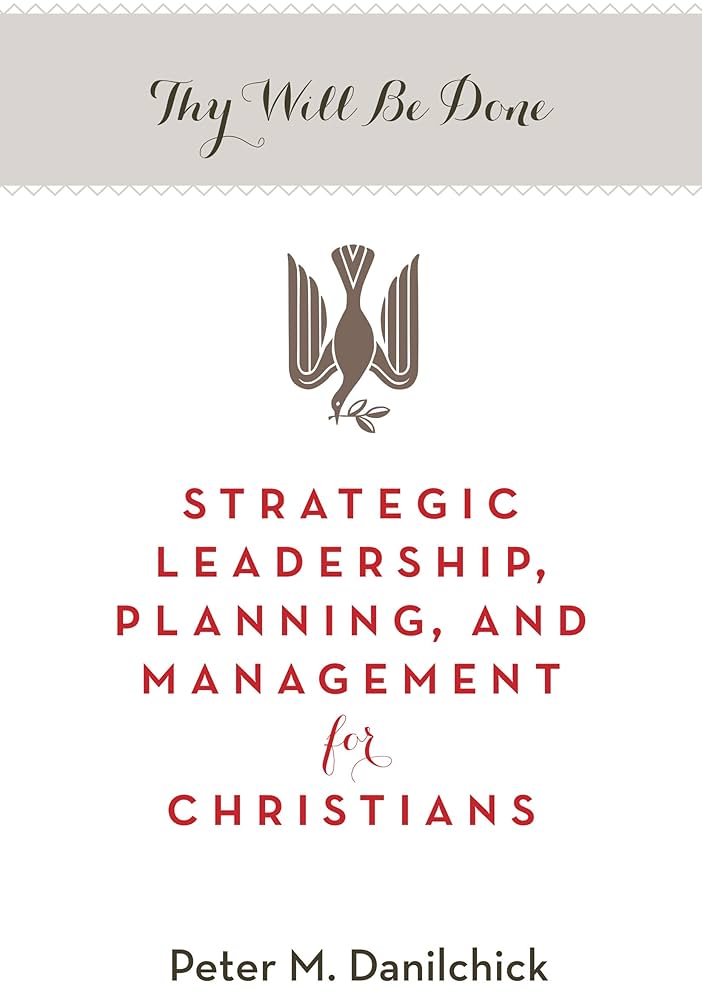
How to Become a Strategic Management Pro: Expert Tips
Are you ready to transform your career and become a leader who drives success? Learning how to become a strategic management expert might be your next big step.
Imagine having the skills to not only analyze complex business environments but also make decisions that lead your company to thrive, even in challenging times. Strategic management is about seeing the bigger picture and steering your organization towards its goals with confidence.
This article will guide you through the essential steps and skills needed to excel in this vital role. You’ll discover practical tips, insider insights, and real-world examples that will make you eager to start this exciting career path. Ready to unlock your potential and make a significant impact? Keep reading to find out how.
Strategic Management Essentials
Strategic management is essential for any organization’s long-term success. It involves planning, monitoring, and analyzing an organization’s initiatives. A strategic manager ensures that all resources are used effectively to meet goals. Understanding the essentials of strategic management can greatly benefit individuals and businesses. Let’s delve into the core concepts and key principles.
Core Concepts
Strategic management starts with defining a clear vision. This vision guides the organization toward its future goals. A strong mission statement is crucial. It outlines the organization’s purpose and values. SWOT analysis is another vital concept. It helps identify strengths, weaknesses, opportunities, and threats. This analysis aids in strategic planning. Understanding the competitive landscape is essential too. Knowing competitors’ strengths helps in crafting better strategies.
Key Principles
Adaptability is a key principle in strategic management. Organizations must adjust strategies with changing environments. Setting measurable goals is another important principle. Clear objectives allow tracking progress effectively. Involving stakeholders in decision-making is essential. Their input can provide diverse perspectives and insights. Risk management is crucial as well. Identifying potential risks helps in preparing contingency plans. Continuous evaluation ensures strategies remain relevant and effective.

Developing Strategic Thinking
Developing strategic thinking is essential for effective management. It enables leaders to foresee opportunities and challenges. This skill helps in making informed decisions that align with long-term goals. Strategic thinking involves analyzing situations and considering various perspectives. It fosters innovation and drives organizational success.
Cultivating A Vision
A clear vision guides decision-making processes. It is the foundation of strategic management. A strong vision inspires and motivates teams. It provides a sense of purpose and direction. Leaders should regularly communicate their vision to ensure alignment across the organization. This helps in maintaining focus and consistency in achieving objectives.
Analytical Skills
Analytical skills are vital for strategic thinking. They involve evaluating information critically. This helps in understanding complex situations and identifying key issues. Strong analytical skills enable leaders to anticipate trends. They can assess risks and opportunities effectively. Developing these skills requires practice and dedication. Utilize data-driven approaches for better decision-making. This helps refine strategies and improve outcomes.
Mastering Competitive Analysis
Competitive analysis is crucial for strategic management. It helps businesses understand their market position. By mastering competitive analysis, companies can identify threats and opportunities. This process involves evaluating rivals and market dynamics. It provides valuable insights for decision-making.
Understanding Market Forces
Market forces shape the competitive landscape. These include supply, demand, and consumer preferences. Understanding these forces helps businesses anticipate changes. Recognizing trends keeps companies agile. It aids in adapting strategies to meet market demands. Companies can better forecast future movements by analyzing these forces.
Swot Analysis Techniques
SWOT analysis is a vital tool in competitive analysis. It stands for Strengths, Weaknesses, Opportunities, and Threats. This technique helps businesses evaluate internal and external factors. Identifying strengths allows leveraging unique advantages. Weaknesses highlight areas needing improvement. Opportunities show potential for growth. Threats reveal challenges to address. SWOT analysis aids strategic planning.

Strategic Planning Process
Embarking on the journey of strategic management requires understanding the strategic planning process. This process is the backbone of effective management, guiding you through crucial steps to achieve business goals. It’s about making informed decisions that propel your organization forward. Let’s dive into the components that make this process a game-changer for your career.
Setting Objectives
Objectives are the compass that directs your strategic efforts. Start by asking yourself what specific outcomes you want to achieve. Clear objectives provide direction and motivate your team. Consider this: if you aim to increase market share, what percentage are you targeting? Define measurable goals that inspire action and track progress.
Reflect on past experiences. Have you ever set a goal that seemed too ambitious? How did you adjust to make it attainable? Your objectives should be challenging yet realistic, pushing boundaries without overwhelming your resources. Remember, a well-defined objective is the foundation of strategic success.
Resource Allocation
Allocating resources effectively is crucial for executing your strategic plan. Think of resources as the fuel that drives your strategies. Identify the financial, human, and technological resources at your disposal. Are you optimizing them to their fullest potential?
Consider creating a resource allocation table. List your resources and map them to your objectives. This visual aid helps in understanding where to focus your efforts. Have you witnessed a project falter due to poor resource planning? Learning from these experiences can sharpen your ability to allocate wisely.
Engage with your team. Solicit their input on resource needs and availability. Are there hidden talents or underutilized tools within your organization? Tapping into these can maximize efficiency and propel your strategic initiatives. Remember, strategic management thrives on thoughtful resource allocation.
Take a moment to reflect: Are your objectives clear? Is resource allocation optimal? These questions can spark actionable insights and lead to strategic breakthroughs. Dive deep into the planning process, and transform your strategic management journey. How will you start shaping your strategic future today?
Leadership In Strategic Management
Leadership plays a vital role in strategic management. Strong leaders guide teams towards achieving long-term goals. They inspire and motivate through clear vision and effective communication. In strategic management, leadership involves making informed decisions. It requires influencing others and navigating complex challenges. Let’s explore how leaders influence stakeholders and make strategic decisions.
Influencing Stakeholders
Leaders must build trust with stakeholders. Trust is key for cooperation and support. Good leaders listen to stakeholder concerns. They address these concerns with empathy and transparency. Clear communication is essential. It helps stakeholders understand strategic goals and their roles. Leaders should also be adaptable. They need to adjust strategies based on stakeholder feedback. This ensures alignment and promotes a unified vision.
Decision-making Strategies
Effective decision-making is crucial in strategic management. Leaders must analyze data and trends. This helps them make informed choices. They should also consider risks and benefits. Balancing short-term gains with long-term objectives is important. Involving team members in decision-making can enhance outcomes. It encourages diverse perspectives and innovative solutions. Leaders should remain decisive and confident. This fosters trust and drives the organization forward.
Implementing Strategy Successfully
Implementing a strategy successfully is where the magic happens. It’s not just about having a great plan on paper; it’s about making that plan work in real life. This is the stage where your strategic management skills are truly tested. You need to be ready to face obstacles and find ways to track your progress effectively. Let’s dive into how you can conquer these challenges.
Execution Challenges
Turning a strategy into action often feels like climbing a mountain. You might encounter resistance from team members who are comfortable with the status quo. It’s crucial to communicate the benefits of the change and involve everyone in the process.
Resource allocation can also pose a problem. You may find yourself struggling to align people, time, and money with your strategic goals. Prioritize your tasks and ensure that your resources are focused on the most impactful areas.
Sometimes, unexpected hurdles pop up. Whether it’s a sudden change in market conditions or internal conflicts, adaptability is key. Be prepared to pivot your strategy without losing sight of your ultimate objectives.
Tracking Progress
How do you know if you’re on the right path? Tracking progress is essential. Set clear milestones to measure the success of your strategy. This keeps everyone accountable and motivated.
Regular feedback loops are vital. Schedule frequent check-ins with your team to assess what’s working and what needs adjustment. This ensures that you’re not just moving forward but moving in the right direction.
Consider using tools like dashboards for real-time data insights. These tools help visualize your progress and highlight areas that require attention. Are your current efforts producing the desired results? If not, it’s time to recalibrate.
Implementing strategy successfully is about overcoming execution challenges and effectively tracking progress. How will you ensure your strategy doesn’t just stay a plan on paper but turns into a success story? The answer lies in your ability to adapt, communicate, and measure. Are you ready to make your strategy a reality?
Adaptability And Innovation
Adaptability and innovation are key in strategic management. They help businesses stay relevant. In a fast-changing world, being flexible is crucial. Innovation sparks progress and new ideas. Strategic managers must embrace change and foster creativity. These skills drive success and growth.
Embracing Change
Change is constant in business. A strategic manager welcomes new trends. They adjust plans when needed. This mindset keeps a business competitive. Observing market shifts is essential. It helps anticipate challenges and opportunities. This way, a company stays ahead.
Fostering Creativity
Creativity fuels innovation. A strategic manager encourages creative thinking. They support team members’ ideas. This creates a culture of innovation. Creative solutions solve complex problems. They lead to unique products and services. This advantage sets a business apart.
Continuous Learning And Improvement
Strategic management grows through continuous learning and improvement. Regularly study industry trends and adapt strategies to stay relevant. Apply new insights and refine skills to enhance decision-making abilities.
Continuous learning and improvement is the heartbeat of becoming a strategic management leader. It’s not just about accumulating knowledge; it’s about applying it in real-world situations to drive growth and innovation. Your journey in strategic management requires an unyielding commitment to learning and adapting. This commitment ensures you not only stay relevant but excel in an ever-evolving business landscape.
Feedback Mechanisms
Feedback is a powerful tool for growth. Actively seek input from peers, mentors, and even subordinates. Their perspectives can uncover blind spots and areas for improvement you might miss. Consider setting up regular check-ins or review sessions. Use these opportunities to gather constructive criticism. This will help you refine your strategies and approaches. Don’t shy away from negative feedback. It can be more valuable than praise. Ask yourself: What can I learn from this? How can I use this information to improve?
Learning Opportunities
The world is full of learning opportunities if you’re open to them. Attend workshops, seminars, and conferences related to strategic management. These events can provide fresh insights and networking possibilities. Enroll in online courses that focus on current trends and techniques. Many platforms offer courses taught by industry leaders. These courses can be a cost-effective way to expand your knowledge base. Reading is another avenue for learning. Books, articles, and case studies can offer new perspectives and strategies. Dedicate time each week to read about industry trends and successful management practices. Remember, your growth as a strategic manager is ongoing. What new skill or knowledge will you pursue next?
Frequently Asked Questions
What Is Strategic Management?
Strategic management involves planning, monitoring, and analyzing an organization’s goals. It helps businesses adapt to changing environments. By aligning resources with objectives, it improves efficiency and effectiveness. Understanding strategic management is crucial for long-term success and competitive advantage.
Why Is Strategic Management Important?
Strategic management is vital for organizational success. It aligns resources with goals, ensuring efficient operations. It helps anticipate changes and adapt strategies accordingly. By fostering informed decision-making, strategic management enhances competitive advantage and sustainability.
How Can I Start A Career In Strategic Management?
To start a career, pursue a relevant degree and gain experience in business roles. Networking and mentorships are valuable for learning. Certifications in strategic management can enhance your credibility and expertise. Continuous learning and skill development are crucial for advancement.
What Skills Are Needed For Strategic Management?
Key skills include analytical thinking, problem-solving, and decision-making. Communication and leadership are essential for guiding teams. Understanding market trends and financial acumen are important. Adaptability and strategic planning skills help in navigating dynamic business environments.
Conclusion
Becoming a strategic manager takes dedication and patience. Start by learning the basics. Understand industry trends and adapt to changes quickly. Practice decision-making with a focus on long-term goals. Build strong communication skills to lead teams effectively. Always seek feedback and learn from experiences.
Networking with other professionals can provide valuable insights. Remember, continuous learning is key to success. Stay updated with new strategies and tools. Your journey to strategic management is ongoing. Keep improving and refining your skills. Success comes with persistence and a willingness to grow.





